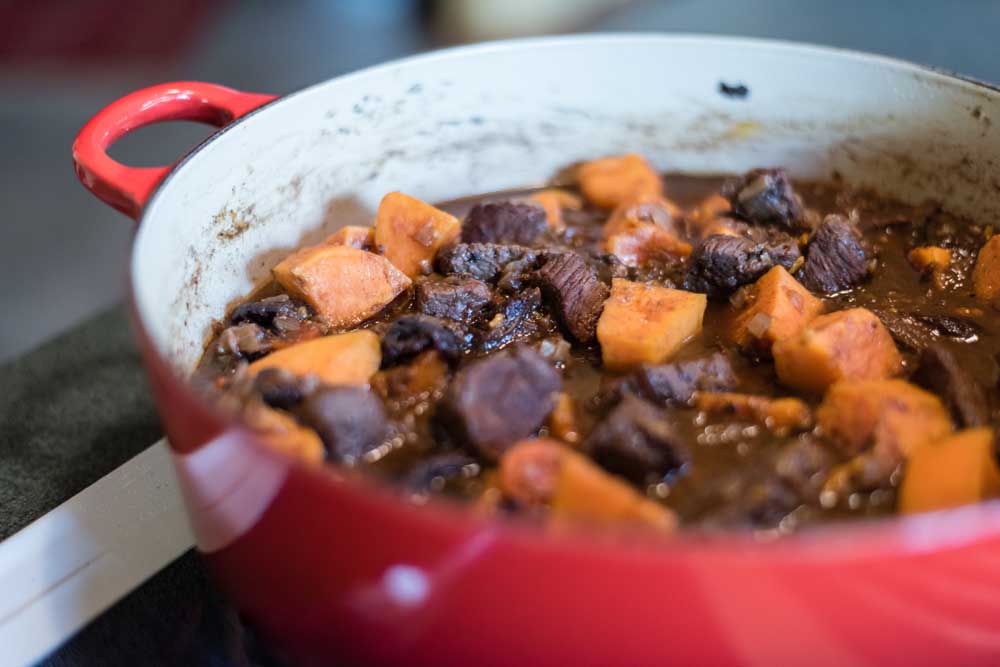Soup & Stew Sensations
Published 12:00 am Saturday, February 14, 2015

- Soup & Stew Sensations
Winter weather begs for soups and stews. Warming and delicious, soups and stews can be an easy and economical way to cook one-pot meals with hearty, and heart-healthy, winter season ingredients.
Deciding which to make — a soup or stew — is mostly dictated by the primary ingredients and preferred cooking method. Stew most often contains meat, vegetables and a thick, soup-like broth that results from added liquid combining over time with the natural juices of the food being stewed. Soup, by contrast, can be any combination of meat, vegetables or fish in a liquid, thick or thin, usually with a shorter cooking time than stew.
Trending
Stews are a smart way to use tougher — often more economical — cuts of meat. The stewing process usually results in tender, juicy bites of meat. Stewing can also be a relaxed way to prepare a meal; beginning the cooking process early allows for less of a rush around meal time. Another benefit is the variety of flavorings that can be used in stews. A commonly used meat can take on an entirely different effect depending on how it is flavored.
Seafood “stew” is called so because the seafood is cooked in the broth, adding its flavor as it simmers. This is technically soup, since all fish and shellfish is best when cooked just until done, not a minute longer. Use finesse — or a kitchen timer — to not overcook seafood for best results!
Soups allow for limitless creativity. With the exception of cream-based soups, soups generally use lean meats or fish and chopped vegetables for healthy, one-bowl meals that warm the soul. At the heart of many soups is a flavorful base of diced onion, celery and carrots sautéed in butter or olive oil. The mirepoix, as the French call this mixture, adds flavor to the cooking liquid and all other ingredients added in along the way.
Soups and stews are an ideal way to use seasonal vegetables. Root vegetables, readily available in winter, can be the base of a puréed soup, or added as just one of many ingredients in soup or stews. Common root vegetables are onions, leeks, garlic, potatoes, sweet potatoes, carrots, turnips, parsnips, and celeriac (celery root). From above ground, cruciferous vegetables such as broccoli, cabbage and cauliflower are delicious in soups and also add vitamins, fiber and disease-fighting phytochemicals.
The meat from winter squash, such as butternut, delicata and acorn, is sweet and creamy when simmered in water to form a pleasing base for soups. Add ginger, curry or other warming spices for a satisfying vegetarian meal. Leafy greens — including spinach, collard greens, kale and chard — add color, texture and vitamin content to soups as well.
Dried food staples are an ideal base for, or addition to, soups. Slow-simmered dried beans and other legumes, such as peas and lentils, make excellent simple soups with just a sautéed mirepoix for extra flavor. Flavorful, inexpensive and versatile, dried legumes are an excellent source of protein, dietary fiber and complex carbohydrates.
Trending
When making puréed soups from beans and other legumes (such as split pea) or vegetables, experiment with blending only half the soup for added tooth. If a thinner consistency is desired, the remainder can also be blended. Small amounts of water or stock can also be added until the perfect consistency is reached. Season to taste after blending and liquid is added.
Adding whole grains — or grain products, such as pasta — to soups adds carbohydrates, creating a meal from a bowl of soup. While pasta is a great addition to minestrone and chicken-based soups, whole grains are a healthier option. Wild rice, brown rice, barley, quinoa and farro are all whole grains that add heart-healthy fiber as well as comforting heft.
Herbs and spices in soups and stews not only add pleasing flavor, but help to reduce the amount of salt needed for seasoning. Other flavor-adding tips include browning meat before adding it to a liquid and using a sautéed mirepoix that adds flavor throughout the cooking process. When adding vegetables to soups and stews, be careful to consider the cooking time needed for each, and that pieces are evenly cut so they become tender simultaneously. Vegetables taste their best when just tender, not mushy.
Want to really get excited about soups and stews? Get ethnic. Try traditional soup and stew recipes from around the world. A few familiar ingredients can be transformed into a culinary adventure when combined with different flavor builders or spices. Perfect examples are the use of ginger root in Asian chicken noodle, or cayenne pepper and sautéed tortilla strips in Mexican tortilla soup.








